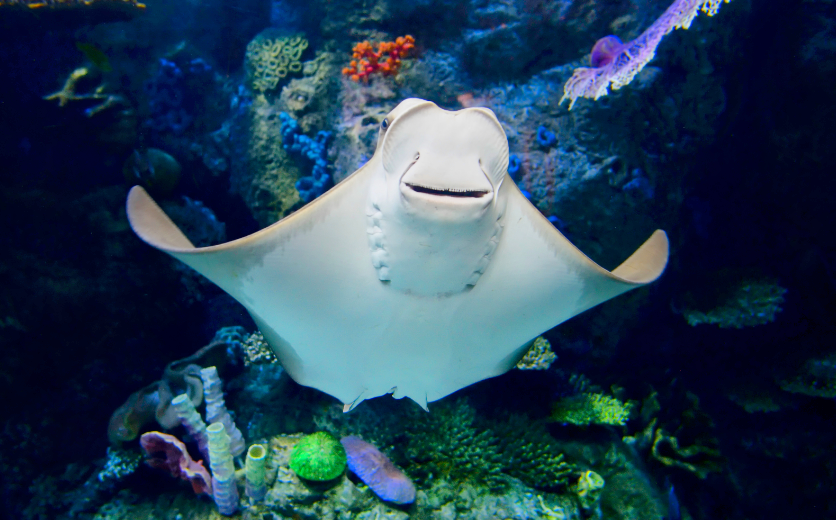
Protruding eyes and snout improve stingray hydrodynamics
Stingrays are unusual among fish in that their bodies are dorsoventrally compressed into flattened discs, rather than being laterally flattened into the more traditional fish shape. When stingrays swim, they propel themselves using undulations of their body and pectoral “wings” without relying on side-to-side motion of the tail.
Scientists have long been fascinated by this very efficient form of locomotion through the water. Until now, however, their studies have not quantified the effects of a stingray’s protruding eyes and snout, which potentially have the ability to disrupt the smooth flow of water and reduce the animal’s hydrodynamic properties.
In a new study published by the American Institute of Physics, the Chinese and South Korean scientists investigate the effects that these protruding features have on the various forces involved in the propulsion of simulated stingrays, such as pressure and vorticity.
“The influence of 3D protruding eyes and mouth on a self-propelled flexible stingray and its underlying hydrodynamic mechanism are not yet fully understood,” said Hyung Jin Sung, from the Korea Advanced Institute of Science and Technology. “In the present study, the hydrodynamic benefit of protruding eyes and mouth was explored for the first time, revealing the hydrodynamic role of protruding eyes and mouth.”
The hydrodynamic forces at play during stingray swimming are complex and cannot be measured adequately using live animals. Instead, the researchers generated a computer model of a self-propelled flexible plate. By “fixing” the front of the plate they could simulate the up-and-down oscillations that a stingray generates when moving through the water.
The model was then adjusted to allow for the addition of multiple rigid plates in 3D, at the position where a stingray’s head and eyes would be. The two models (with and without a protruding 3D head) were then compared using a technique known as the penalty immersed boundary method.
“Managing random fish swimming, and isolating the desired purpose of measurement from numerous factors are difficult,” said Sung. “To overcome these limitations, the penalty immersed boundary method was adopted to find the hydrodynamic benefits of the protruding eyes and mouth.”
The results showed that the presence of the protruding eyes and snout increased a stingray’s propulsion efficiency by more than 20 percent and 10 percent respectively. This was achieved due to the generation of vortices as water flowed over the head region. A vortex at the simulated animal’s front increased negative pressure in the forward-backward plane, while a side-to-side vortex added to the pressure differential above and below the body. These factors led to a boost in thrust, cruising speed, and overall efficiency of locomotion.
The researchers hope that their new understanding of fluid phenomena in stingray locomotion can be applied in the design and development of future aquatic vehicles that move efficiently underwater.
The study is published in the journal Physics of Fluids.
—
By Alison Bosman, Earth.com Staff Writer












